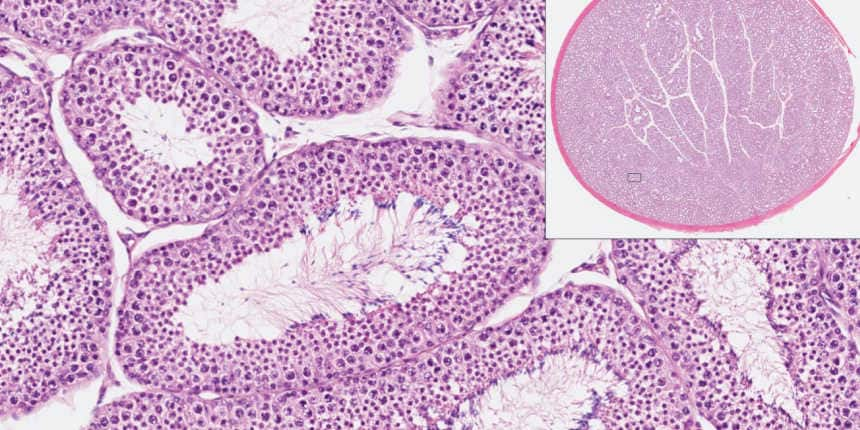How Many Seminiferous Tubules are there?
A human male has around 750-1200 seminiferous tubules in total. They control the production, maintenance, and storage of sperm.
This Story also Contains
- Seminiferous tubules
- Structure
- Function

Seminiferous tubules
The testicles, the two oval-shaped structures on either side of a male's penis, contain seminiferous tubules. Each testicle contains around 800 seminiferous tubules, responsible for meiosis and the subsequent generation of spermatozoa. Each of these tubules produces thousands of sperm per second in a mature adult man. The tubules are tightly coiled throughout the testes and can be as long as a mile between the two testes. Sertoli Cells, a specialised cell type responsible for producing sperm, line their tissue. They secrete a protein that raises testosterone concentration within the seminiferous tubules.
Seminiferous tubules are classified into two types:
· Convoluted - Found on the sidewalls of the testicles, where sperm cells are created.
· Straight- Canals convey sperm cells to the rete testis, a network of tiny tubes in the testicle that aids in the movement of sperm cells from the testicle to the epididymis.
Structure
The tubule epithelium is made up of a kind of sustentacular cell known as Sertoli cells, which are tall, columnar cells that border the tubule. Spermatogenic cells exist between the Sertoli cells and develop into sperm cells via meiosis. Sertoli cells are responsible for nourishing growing sperm cells. They release androgen-binding protein, a binding protein that boosts testosterone concentration. The testis cords evolve from the primitive gonadal cords, which develop from the gonadal ridge, to generate the seminiferous tubules.
Function
Spermatogenesis, or the production of spermatozoa, occurs in the seminiferous tubules. During spermatogenesis, the DNA of spermatogenic cells in the seminiferous tubules could be damaged by reactive oxygen species. DNA repair methods safeguard the genetic integrity of spermatogenic cells. Infertility may result from deficiencies in these repair mechanisms.
Applications for Admissions are open.
As per latest syllabus. Physics formulas, equations, & laws of class 11 & 12th chapters
JEE Main Important Chemistry formulas
Get nowAs per latest syllabus. Chemistry formulas, equations, & laws of class 11 & 12th chapters
JEE Main high scoring chapters and topics
Get nowAs per latest 2024 syllabus. Study 40% syllabus and score upto 100% marks in JEE
JEE Main Important Mathematics Formulas
Get nowAs per latest syllabus. Maths formulas, equations, & theorems of class 11 & 12th chapters